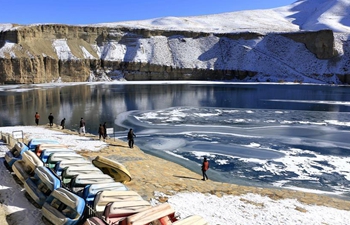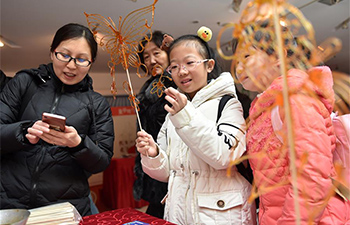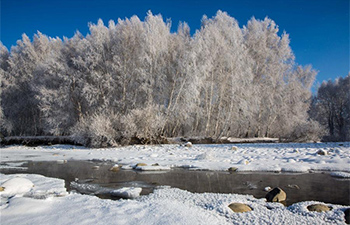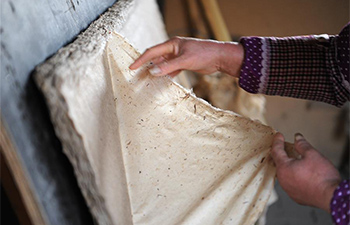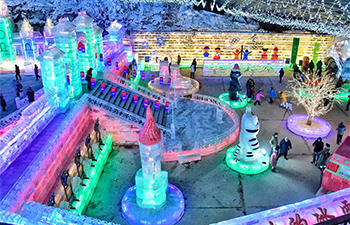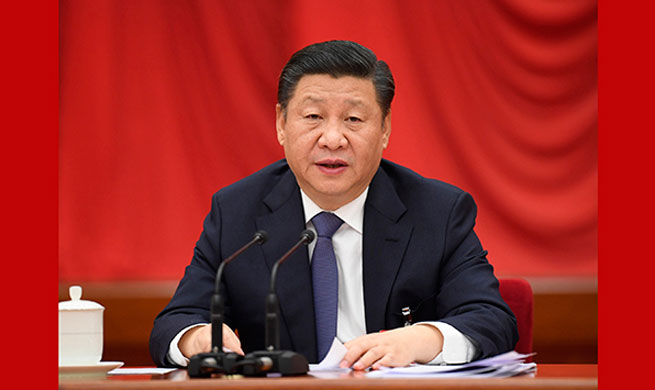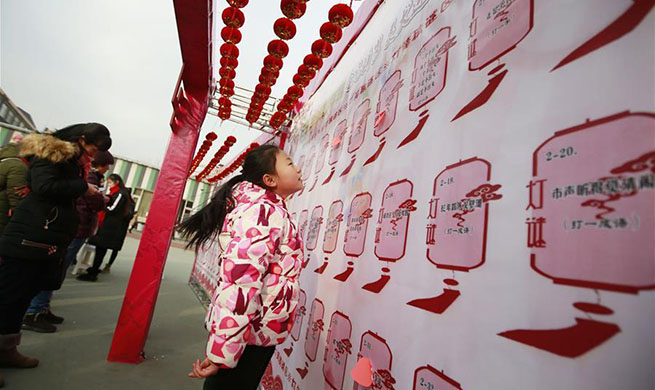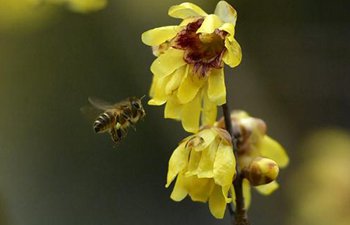by Salah Takieddine
BEIRUT, Jan. 20 (Xinhua) -- Ahmad al-Samra, a Syrian displaced from Beit Jin to the Lebanese southern town of Shebaa, was engaged in a happy conversation over his cellular phone with his relatives who returned to their homeland after their forced displacement about five years haago.
Al-Samra told Xinhua "I called many of my relatives and friends who returned to Beit Jin after the military activities ceased on the eastern mold of Mount Hermon, to see how they are doing."
The Syrian army managed following 100 days of fierce battles to takeover all the area on the eastern mold of Mount Hermon that was occupied by the rebels.
Al-Samra asserted that "life has returned to normal in this mountainous area and the people launched in coordination with the Syrian government a huge plan to remove all the ruins of the battles and repair the necessary infrastructures."
He added "our return is surely near and it will start by the end of the winter season."
This optimistic feeling reigned over a large part of the 20,000 displaced from the Damascus western Ghouta neighborhood, who fled their homeland to the eastern sector in south Lebanon on the western mold of Mount Hermon.
Displaced Jamal al-Houeili, a widow and mother of 3 children, lost her husband during the battles with al-Nusra Front. She told Xinhua that she learned through her relatives in Beit Jin that her house was damaged during the fighting "but we can return and stay in one room until we can finish restoring it completely."
She stressed "I decided to walk back home through Mount Hermon by the end of the schooling year in Lebanon."
The Syrian refugees in Shebaa unanimously decided to return to their hometowns of Beit Jin, Moghr el-Mir, Beit Safer, Beit Tima, Kfarhour and Ain el-Shara on the eastern mold of Mount Hermon, that were occupied by the rebels.
Ahmad al-Sayyaf, who works in a chicken farm in Shebaa for a monthly salary of 300 dollars, said that he decided to return to his hometown of Beit Safer after five years of forced displacement.
He told Xinhua "we fled at night during the battles between the Syrian army and the rebels in our town, and crossed the rigged mountainous roads through Mount Hermon until we reached Shebaa."
He added "it was a strenuous trip particularly that two of my children were wounded by shrapnel and we carried them to Lebanon on the back of a mule. But our route back home would certainly be easier than our escape route that we hope would never use again."
The same feeling was that of Jamal Aboul-Nour, displaced from Beit Jin, who explained that "our return route will be through Mount Hermon but it would be pleasant and safe now."
Aboul-Nour told Xinhua "I spent my displacement years herding cattle and managed to have my own herd that I will take back home cause it is the source of our living now."
According to the latest statistics of Lebanon's Ministry of State for the Displaced Affairs, the number of Syrian displaced registered with the United Nations Higher Commission for Refugees (UNHCR) dropped from 1.2 million to 980,000.
The ministry pointed that the number of Syrians who immigrated to Europe, the U.S., Canada and Australia is about 70,000 while those who returned to safe areas in Syria are about 150,000.




